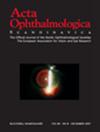Molecular responses of the aging retina are sexually divergent in Ephx2−/− mice
Abstract
Aims/Purpose: Aberrant molecular changes are a major driver of age-related retinopathies. Furthermore, sexual dimorphism is a key variable in disease predilection, although it is not well defined in preclinical studies. Among the potential targets for mitigating age-related proteome modifications attributed to vision impairment, we recently unraveled the protective effects of soluble epoxide hydrolase (sEH/ Ephx2) inhibition in glaucoma. Here, we hypothesized that molecular responses of the aging retina are also sexually divergent in the Ephx2-/- (KO) mice.
Methods: Retinae were isolated from 160 young (3-5 months) and old (12-24 months) wild type (WT) and KO mice of both sexes. Samples were pooled (n = 5 mice/group/replicate) with 4 biological replicates per group and subjected to robust proteomic and bioinformatic analyses to elucidate the underlying mechanistic changes.
Results: We observed age- and sex-related body weight changes in mice of both sexes, with no significant differences between the WT and KO mice. Proteome profiling showed significant (p < 0.05) differential expression of proteins between the genders, with a significant involvement in the eIF2 and ferroptosis signaling pathways in both sexes. Remarkably, the female sex exhibited striking resilience against ferroptosis, while the male counterpart demonstrated profound activation of this pathway in both WT (p = 4.2×10-4; z-score: 1.3) and KO mice (p = 4.2×10-4; z-score: 2). Intriguingly, aged WT females were highly susceptible to retinal diseases (p = 9.6×10-4) and neurodegeneration (p = 9.9×10-4), but KO significantly regulated proteins related to synaptogenesis (p = 3.8×10-2) and neurotransmission (p = 1.7×10-2). In addition, KO significantly activated neuritogenesis (p = 5.4×10-5) and cell-cell contact (p = 1.2×10-3) in both sexes. It is noteworthy that a major upstream transcription regulator, X-box binding protein 1 (XBP1), which is responsible for maintaining protein homeostasis by ameliorating ER stress, was found only in aged male retinae (WT: p = 3.9×10-4; KO: p = 8.1×10-3).
Conclusions: Taken together, we showed for the first time a sex-related trend in the proteome of aging KO retina, which is crucial for understanding the pathomechanistic underpinnings of age-related retinal diseases and potential targeted intervention.

 求助内容:
求助内容: 应助结果提醒方式:
应助结果提醒方式:


